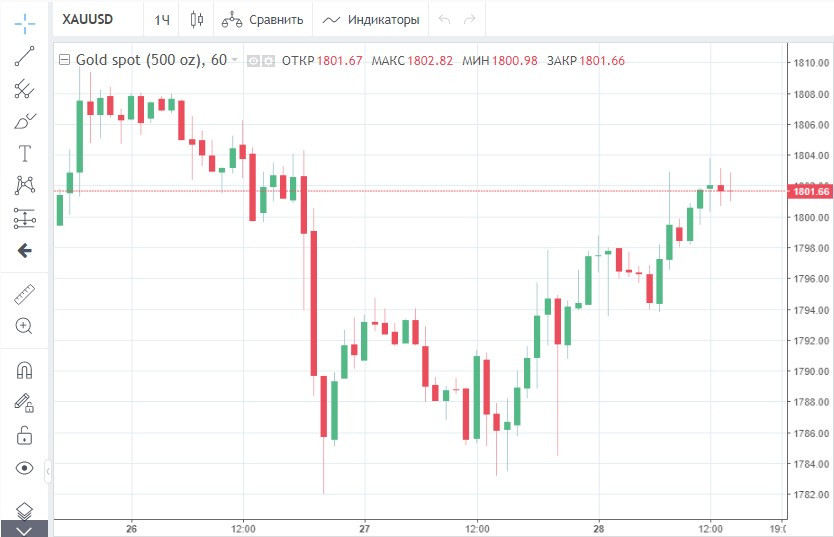
On Wednesday, gold traded higher but still failed to break the $1,800 barrier. Let's analyze why the precious metal is moving sideways and how long consolidation will last.
As investors locked in profits on Tuesday, the asset went down. Yesterday, however, gold traded higher. Demand for the safe-haven asset increased amid growing US-China tensions.
At the beginning of the week, the Federal Communications Commission banned China Telecom, the largest telecommunications operator in China, from operating in the US, citing national security concerns.
The escalation of tensions between the world's two largest economies had a significant impact on the greenback and 10-year bond yields. On Wednesday, the US dollar index dropped by 0.2%, and bond yields tumbled to 1.529%.
Gold responded with steady growth. The quote climbed 0.3%, or $5.40, settling at $1,798,90 on the COMEX exchange.

Growing uncertainty surrounding the economic impact of yet another surge in new COVID-19 infections on some countries is now providing support to gold.
Rising inflation concerns worldwide are also driving the asset at the moment. Investors no longer believe that high inflation is temporary. In this light, gold soared above the psychological and important level of $1,800. On Monday, the price surged to $1,806.80.
Nevertheless, gold failed to consolidate there. As a result, the quote plunged below the mark on the following day, which also hardly surprised market participants.
The asset has been trying to break through the resistance level and consolidate above it for several months. It is like a vicious circle, but analysts, of course, have a rational explanation.
They pinpoint that there is currently a balance between demand and supply in the global gold market. This balance is the reason for ongoing consolidation. The price has been hovering around the $1,800 mark for a long while.
To confirm this assumption, let's look at the latest World Gold Council report. In the 3rd quarter, the supply of gold in the market dropped sharply and was followed by a steep fall in demand.
The supply of gold in the reporting period totaled 1,240 tons. As a result, the annual supply decreased by 3%. Experts emphasize that a drop in the supply of gold is caused not by declining production, but a fall in processing that plunged by 22%.
Meanwhile, annual demand for gold plummeted by 5% to 831.4 tons. According to WGC, the decline came amid rising yields on US government bonds.
Since the beginning of the year, the Fed's dovish stance on monetary policy boosted the 10-year bond yield by 70 basis points to 1.6%.
Today, Treasuries are more attractive than gold that does not make interest. For that reason, the bullion is unable to consolidate above $1,800.
Consolidation is forecast to last at least until the end of the year because gold may face pressure soon. If the Federal Reserve starts reducing asset purchases, bond yields will soar and the greenback will skyrocket.
At the same time, owing to the high inflation rate, the precious metal remains in the prolonged bullish trend. Next year, gold is expected to trade at around $1,850 and at $1,900 by 2023.





















